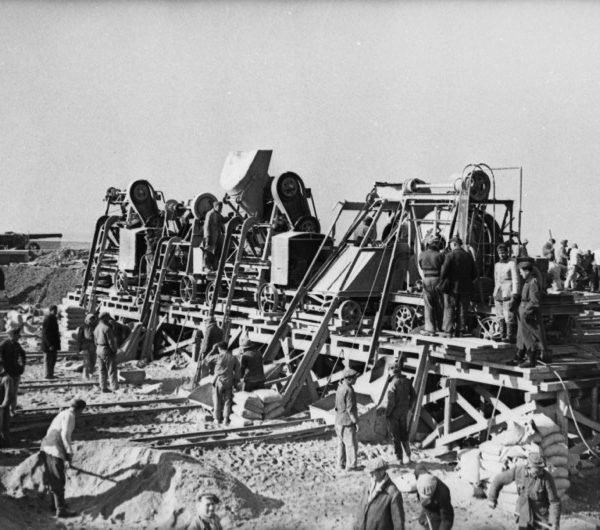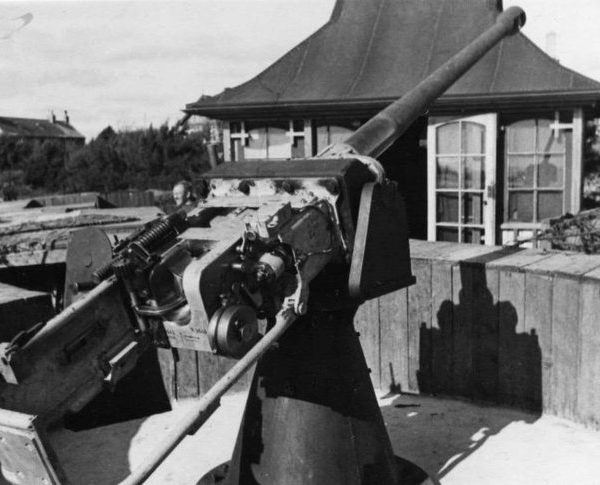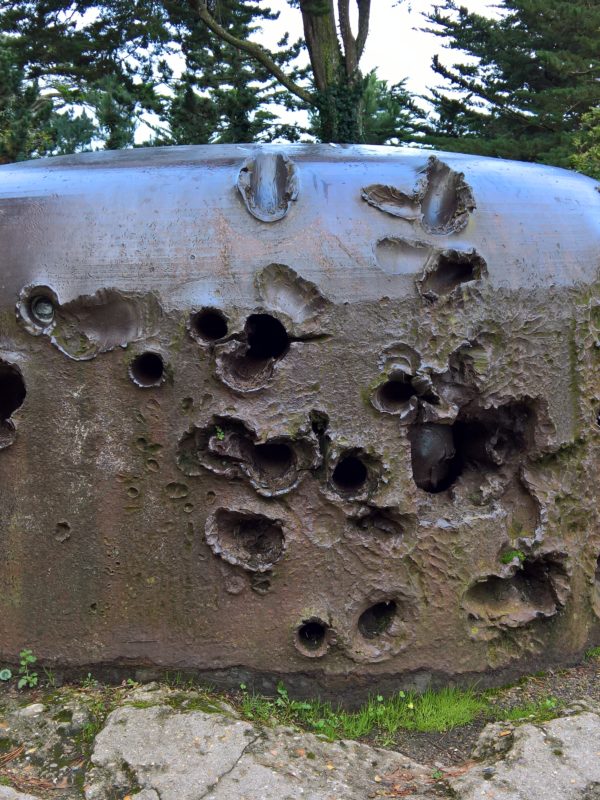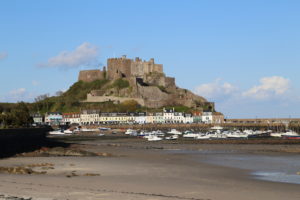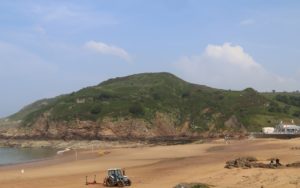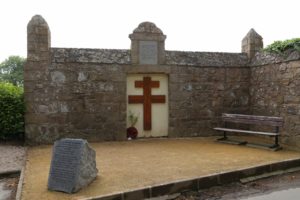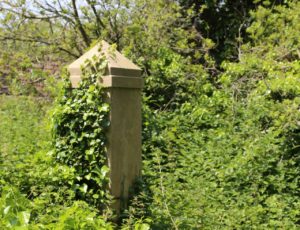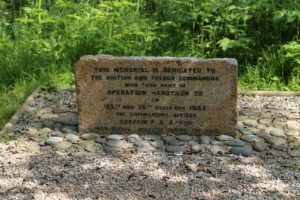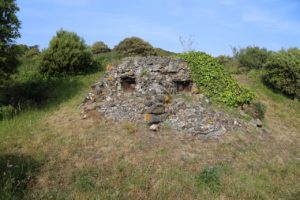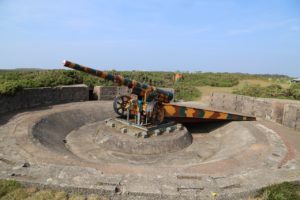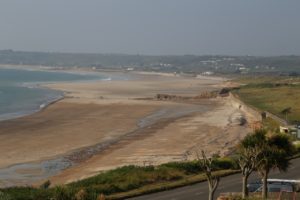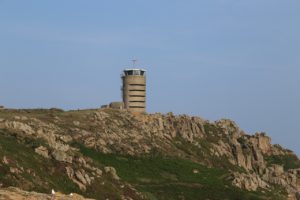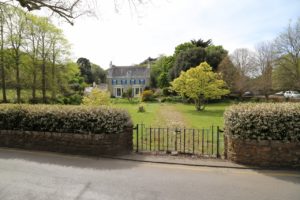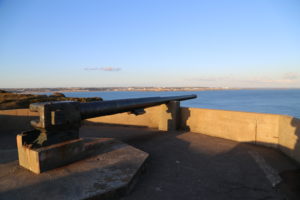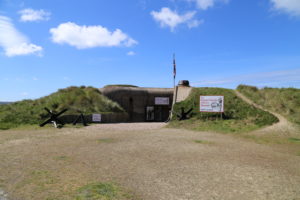What was it like to live under the German occupation? This is the question most often asked. Under the backdrop of the repugnant nature of the Nazi regeime, the answer the answer is complicated. There are plenty of myths that have been propagated over the years by those wanting to create a sensational story. But for most people, like the rest of Nazi dominated Europe, it was a case of surviving. What we try and do on our tours is to give you the truth as far as it is known, and which in some cases is even more astonishing than the myths.
What is there to see? The most obvious reminders of the German Occupation are the many fortified bunkers built by the Germans as part of Hitler’s Atlantic Wall to defend his conquered and occupied territories from what the Germans considered to be an inevitable Allied attack. However, there are many other everyday reminders which are completely overlooked as relics of that time or there are others hidden from view by nature and development which makes for some surprising finds!
Was there any resistance? Not armed resistance like in occupied Europe but nonetheless there was resistance by the population and some of the stories reflect the determination of many not to accept German rules and regulations. And if you were caught, severe punishment was meeted out, which in some cases proved to be fatal as spells in prisons and concentration camps in Germany were one way.
So how come the Germans built such a lot of fortifications here? The most common answer given is that Hitler ordered it and didn’t intend to give the islands back at the end of the war (which he expected the Germans to win!). However the answer isn’t that simple and then the defences were never tested.
And who built the fortifications and bunkers? I am afraid that the correct answer isn’t the usual one trotted out and like other questions, the answer is more complicated. What we do know is that the whole of teh Nazi regime was underpinned by forced and slave labour. Men and women across the Nazi Third Reich were cogs in the German war machine forced to work, mistreated and regarded as expendable. The Channel Islands perhaps did not see the worst attrocities in comparison to the rest of Europe, and whilst a large part of the labour force working were volunteers attracted by inflated wages, there were many who forced to work (paid and unpaid) to underpin the warped idealogical beliefs of the Nazis. So much for the sensationalist myth that all were built entirely by imported slave and forced labour – there were some within that category though.
Were the German defences impregnable? No – but you will have to come on a tour to understand why!
And what about the German soldiers? Were they well behaved or the stereotypical Nazis? The answer is a bit of both. There were clearly some who revelled in the power that Nazism gave them. Many however were reservists called back into military service, and through age, health or injury, were unfit for front line service and were thankful that their posting was not the Russian Front. For many of these men, survival was also the overriding objective and the luck of a Channel Islands posting gave them an advantage, and it was unnecessary to stand out and flex the brutality of Nazism to achieve that objective.
Was there collaboration with the Germans….?
So many more questions to which you will hopefully find out the answers by coming on one of our tours.
Tour Themes
Our German Occupation tours are tailored to suit the various themes that can be followed. There is an element of overlap – those wanting more of a battlefield and military history tour can opt for a “Military history and fortifications” theme. Those wanting to understand the impact on the local population and everyday life might choose an “Occupation Life in Jersey” theme.
Half of my family remained in Jersey for the 5 years of German Occupation and the other half, being a military family with a pre-war posting in Jersey were evacuated in 1940 only to return and be reunited with the rest of their family after those 5 years. I am therefore fortunate to have some unique family stories that I will share with you.
“German fortifications – Hilter’s fatally flawed fortress madness”
Military History Interest. This tour explores the military history of the German Occupation and its impact on the Island – we will explore why the Germans built so many bunkers and fortifications and how effective they might have been. We will visit some “battlefield” sites where some limited engagements took place between the German occupiers and the Allies. And we may be able to include some interior bunker access and weapon handling and a visit to the Channel Island Military Museum and its huge collection of German Occupation artefacts.
“Occupation Life in Jersey”
German Occupation, General and Social Interest. The German Occupation changed Jersey forever. Loss of freedom, hardship and millions of tons of concrete and steel! A more general tour covering the impact of the Occupation upon Jersey’s residents as well as the Island itself. Few people who have only known freedom will understand how occupation changes human behaviour – sometimes for the better but often for the worst. This tour circles the Island and therefore includes most of Jersey’s best scenery. We can include a visit to a bunker for a close-up experience and the Occupation Tapestry Gallery to view the modern “Bayeux Tapestry” of the German Occupation with its multi-media enhanced displays..
Some of the sites we visit on our German Occupation Tours
- Lager Wick, forced labour camp
- Gorey Castle, Strongpoint and Harbour
- Diélamont Manor Memorial to crashed Spitfire pilot, Pilot Officer Scheidhauer, RAF
- Site of the British Commando raid, Égypte, Trinity
- Grève de Lecq Bay
- Louisa Gould home and memorial
- St Ouen’s Manor
- Sqdn Ldr Henri Gonay crash site memorial
- Batterie Moltke and MP3, Les Landes
- Channel Islands Military Museum
- Sechsschartentürme – Heavy Machinegun Turret bunker, Val de la Mare
- St Ouen’s Bay
- Corbière Strongpoint bunkers
- St Brelade’s Bay – Soldatenheim and German Military Cemetery
- Batterie Lothringen and MP1, Noirmont – also site of US PT Boat naval and RAF shipping engagements offshore
- 4.7cm Anti-Tank Gun Casemate, Millbrook
- German Military prison and Allied POW camp
- CWGC Allied Cemetery
- Occupation Tapestry Gallery
Please see the separate Places section below to see some of the locations which are included in these tours.
You can also Click the Map icon (below main image in grey bar to the right) to view locations and see further information
History Alive’s and Jersey Military Tours are devised in a way to give our guests an overall and enjoyable experience which means that we won’t always follow the same route or stop at all the above locations. This also gives us the ability to make changes either to take advantage of, or to mitigate against, factors such as weather or other delays which might affect timing. On full day tours, we stop at lunch times where refreshments/food can be purchased, and on all tours, we will stop as necessary for refreshments and comfort breaks.
Level of Fitness required for tour Our Tours are a combination of a coach tour and exploring the sites on foot, so please refer to the Level of Fitness required to enjoy these Tours. It should be noted that any tour involving bunker and fortification sites will invariably involve walking over some rough ground, climbing up and down slopes and steps. A moderate level of fitness is therefore required. For that, and for what’s included in these Tours and Prices, as well as Pick-Up points for the Tours, please see Information below

 We offset our carbon footprint for each tour and additionally match it with a donation towards seagrass conservation
We offset our carbon footprint for each tour and additionally match it with a donation towards seagrass conservation

